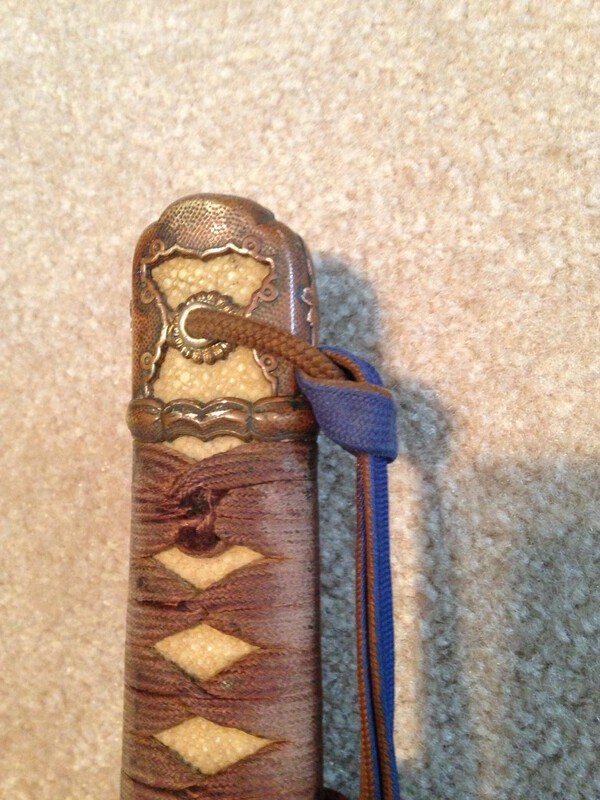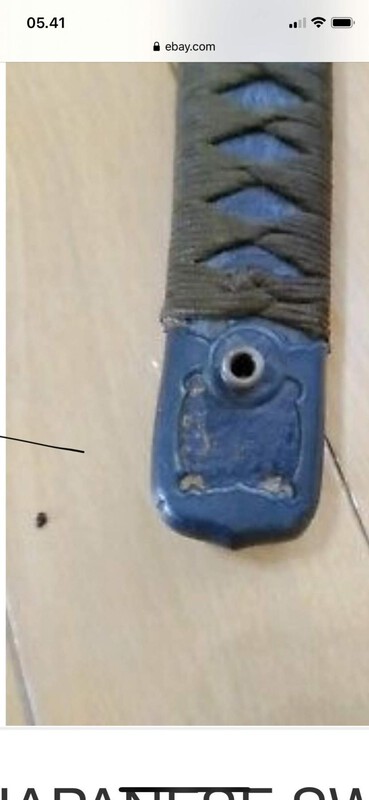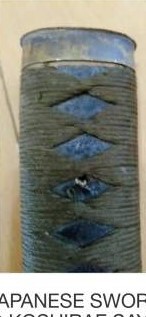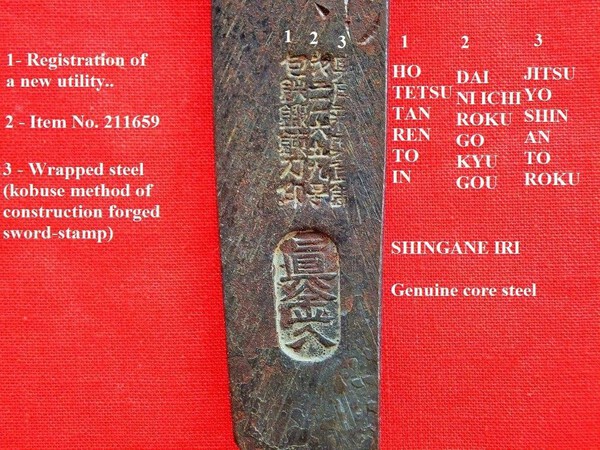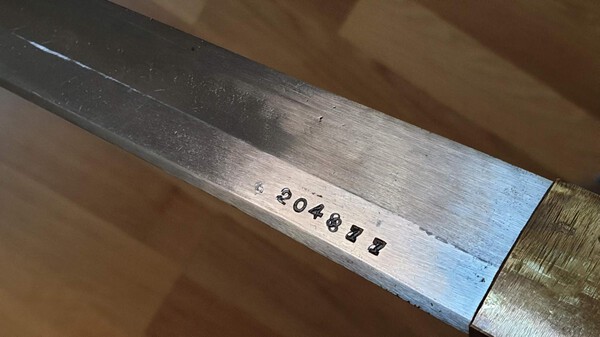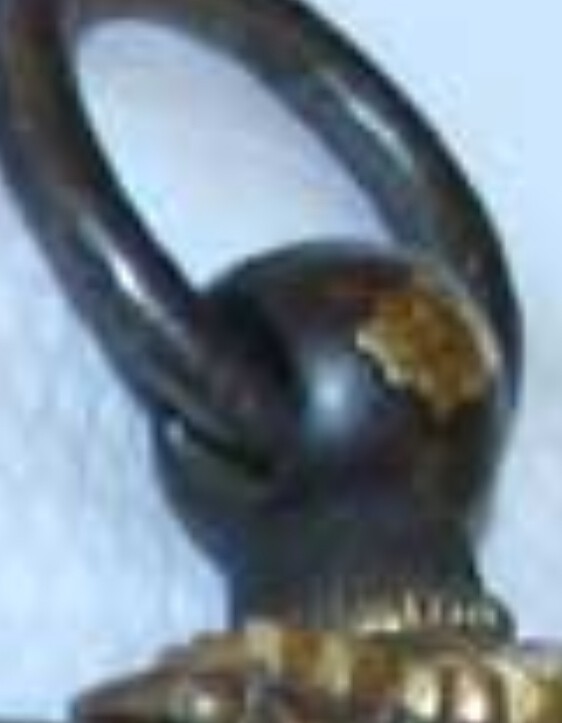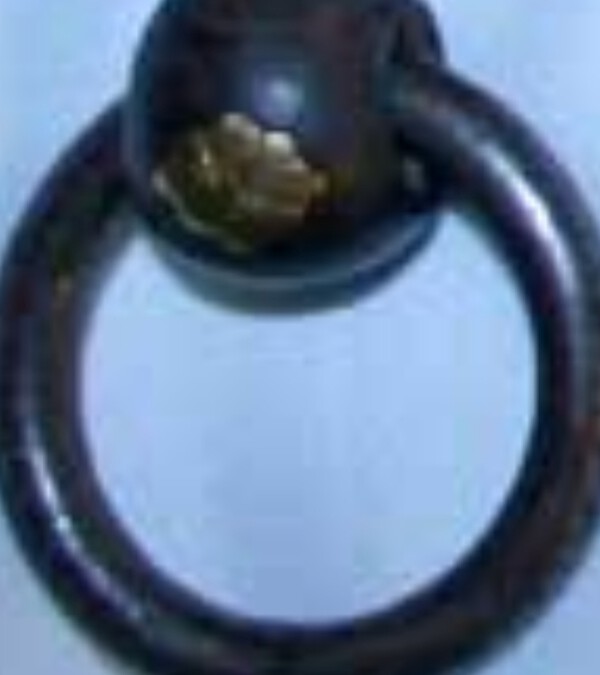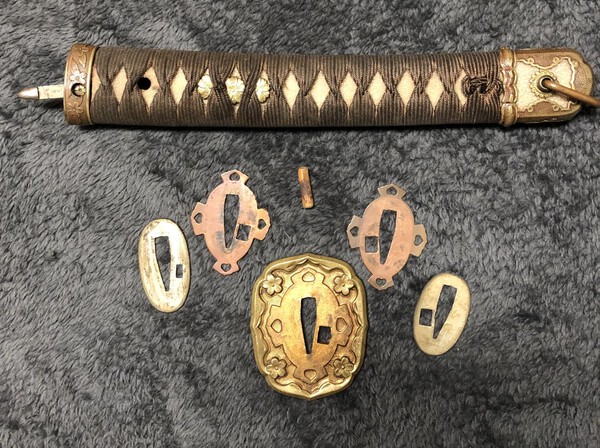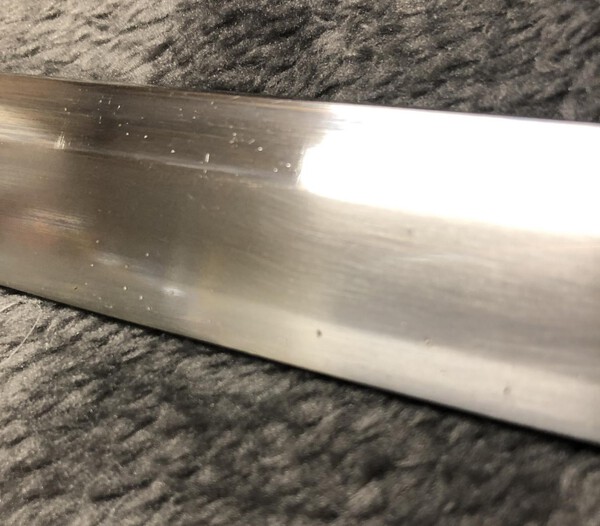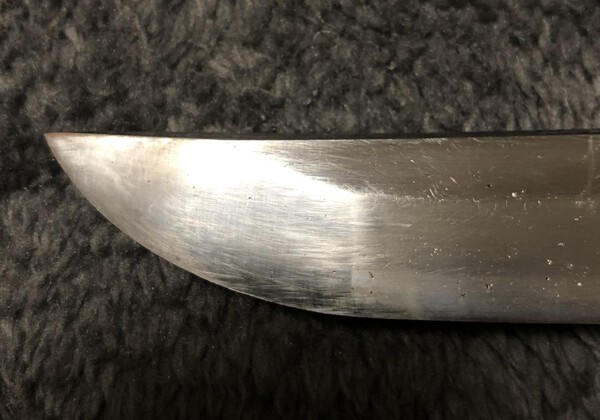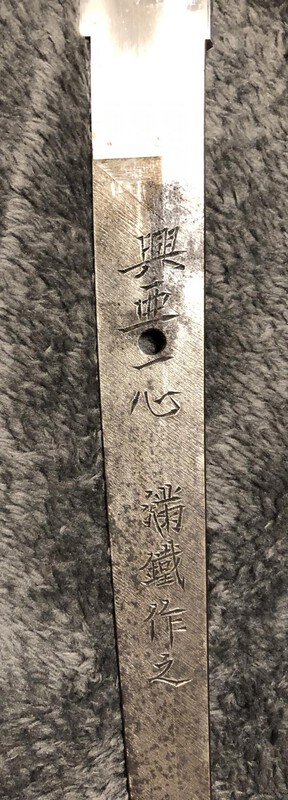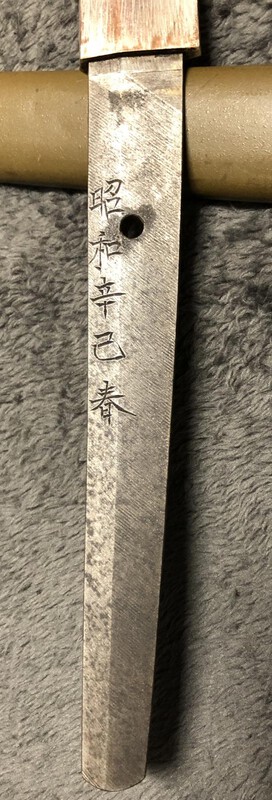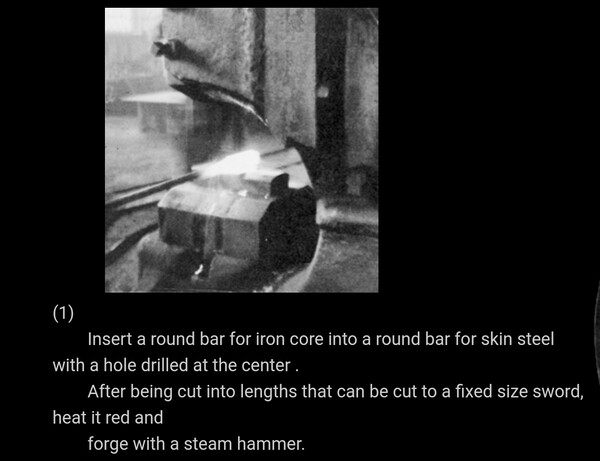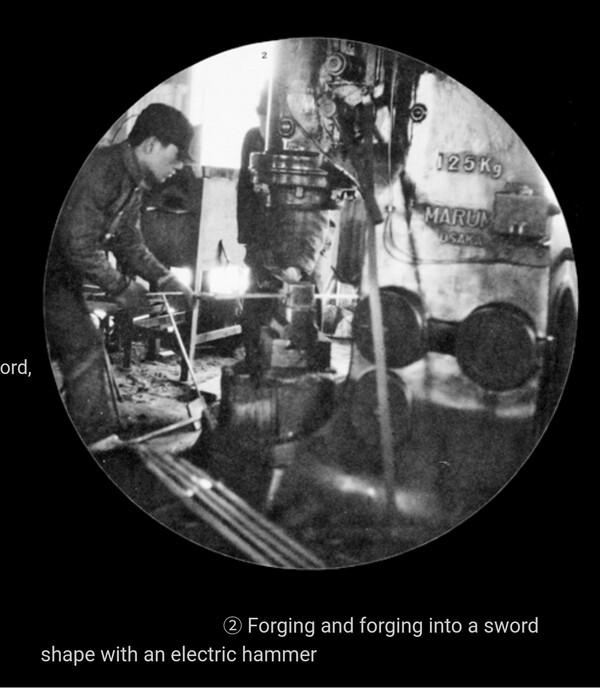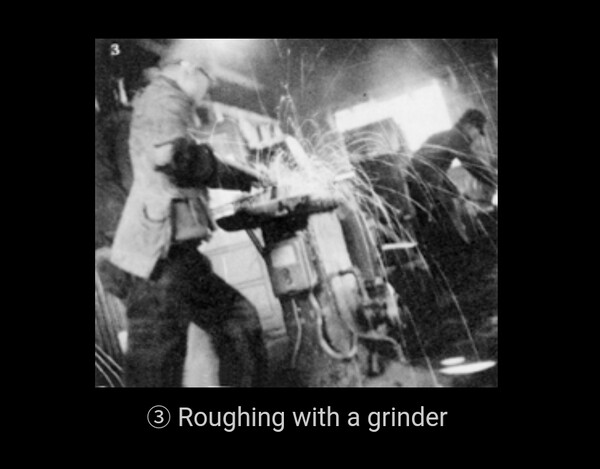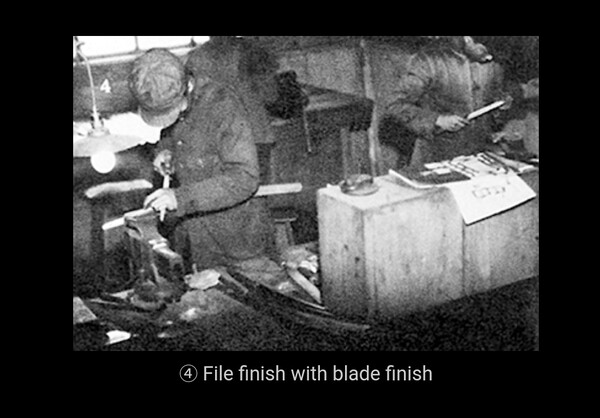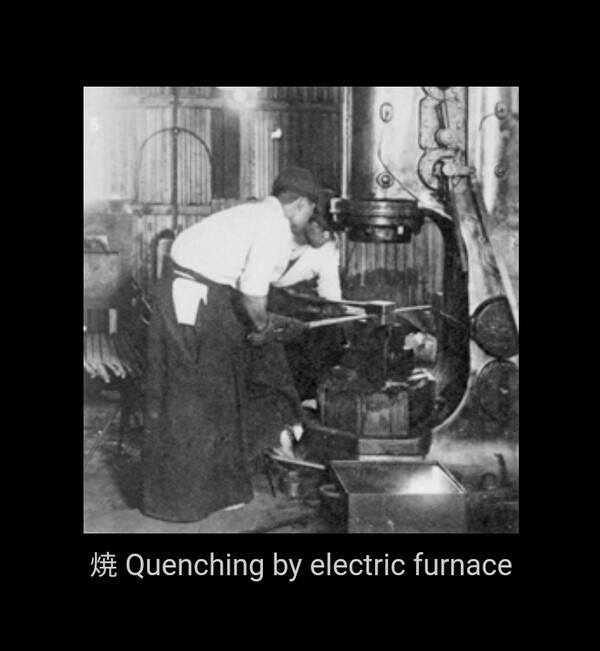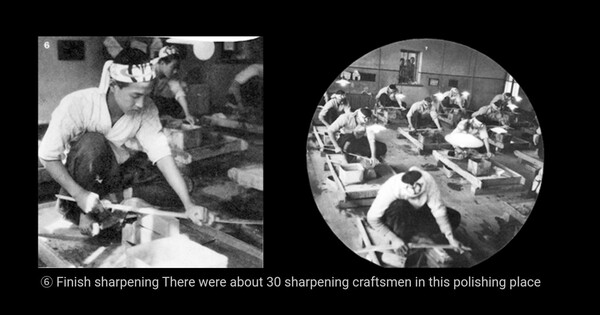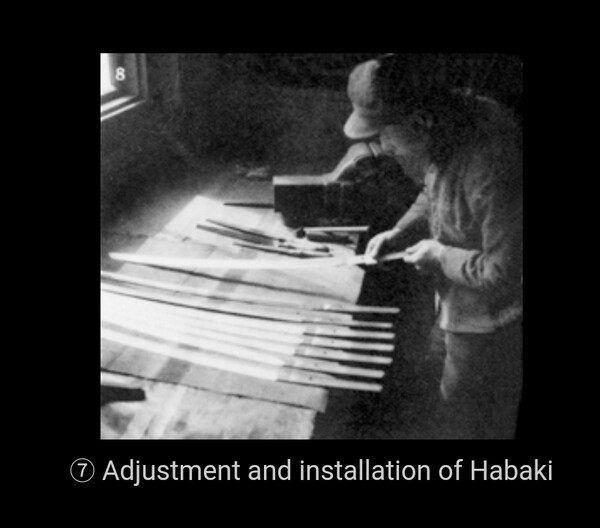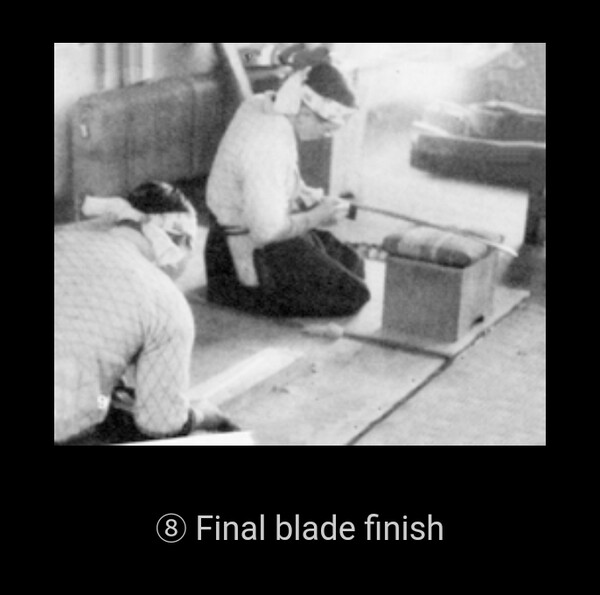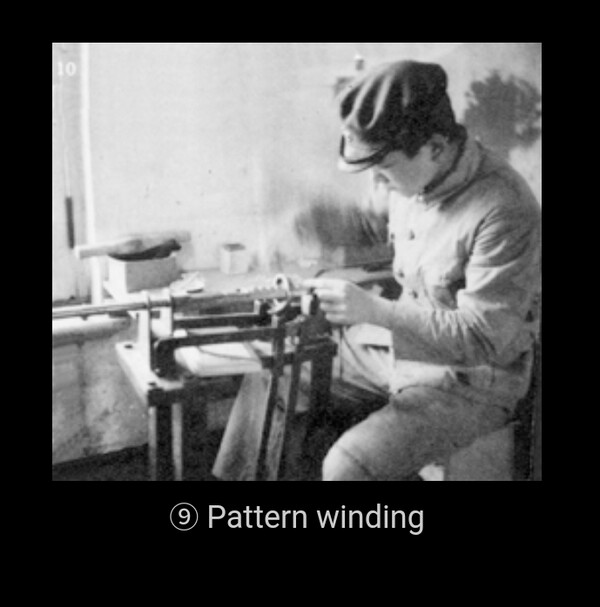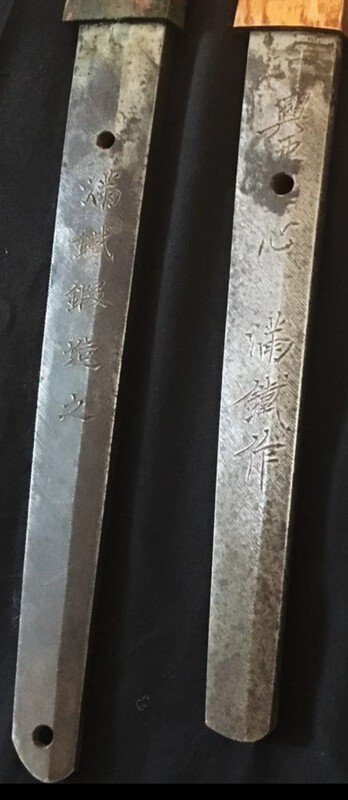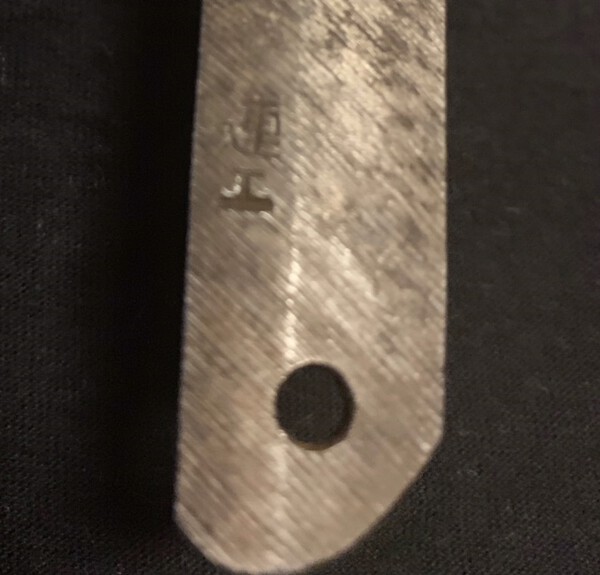-
Posts
13,911 -
Joined
-
Last visited
-
Days Won
169
Content Type
Profiles
Forums
Events
Store
Downloads
Gallery
Everything posted by Bruce Pennington
-
Steve,Years ago I had a lengthy discussion of gold-painted gunto on the SFI site (http://www.swordforum.com/vb4/showthread.php?115526-Gold-Painted-Shin-Guntos!). There was a reference in a book about gold scabbards glinting in the sun at the emperor's coronation. But that took place in 1926! So it wouldn't make sense that 95s and 98s would be painted gold for a coronation since they were made years after the fact. I have pics of a kyu painted gold, which by date could have been there. I've since stripped my 2. The late-war one still had it's original paint underneath, but the aluminum-handled one had been stripped to the bare metal before painting gold (although the screw tab on the saya throat piece still had the original green!). In both cases, the painted came off with acetone, which I was led to believe wouldn't take off WWII era paint. I've pics of gold-painted gunto I could share, but we're starting to turn your black saya thread into something else.
-
Ditto
-
I know we have had these double-holed tsuba discussed in the past. Maybe someone with good search skills could bring up the links. Would be interesting to see the stamping, if shown.
-

Pinned Kabutogane on Type 94
Bruce Pennington replied to PNSSHOGUN's topic in Military Swords of Japan
-
Not to mention my nice Mantetsu Koa Isshin for $2,600: http://www.militaria.co.za/nmb/topic/30647-nice-1941-koa-isshin-mantetsu-type-98-for-sale/
-
-
-
Steve, It has been 99% proven. But Nick's new info is possibly an end-of-the-war Rinji mod that served as the model/inspiration for the post-war souvenirs. My example is probably what John, and Nick, said - they still were going to use parts available until they ran out. Only the saya of mine fits the Navy Rinji concept.
-
Sorry, Austus, I think that site does a similar thing that Wikipedia does by linking key words to various other discussions about a keyword. Nick was referring to the gunto of the thread's topic.
-
I have one that may fit the description. It's a late-war, undated, Toyokawa navy arseanl blade in combat saya with 1 haikan. The thing that doesn't seem to fit is that the fuchi is decorated normally.
-
Recently discovered by NIck Komiya at Warrelics: I don't know how relevant it is to the discussions here, but the navy also issued a "Last Ditch" Rinji spec directive for officer swords on 27th March 1945. Directive Number 54 said "1: Gilding, Gold Colored Metal and Cherry branch engravings are to cease, 2:Sarute not to be attached, 3:Only one Haikan (scabbard ring) to be present, 4: Use of animal skins to be minimized, 5: Push button type locks to be changed to tie-cord type, 6: Scabbards to be wrapped in tree bark and be finished with black lacquer. By that time, the navy had lost its ships and most members got deployed as land troops, so it is understandable if the above Rinji spec got to be associated with the NFL. The PX sword discussed here seems to consist mainly of parts matching the description above, but with some gold colored parts thrown in to beautify them. I asked for clarification on the fuchi design, and he said: "In Japanese, point 1 is 「金鍍金、金色金属、枝桜毛彫及彫刻ヲ用ヒザルコト」, which says no gold color nor engraved or relief adornment, so a "plain Jane". This directive is mentioned in the Ohmura site as well as Wikipedia, so it should be common knowledge to Gunto collectors already." So this explains the odd-ball navy gunto with one haikan (ashi). I'm not talking about the souvenir sold with mixed army/navy fittings, but actual navy gunto. If memory serves, I saw one in combat saya with single haikan. If anyone has an example, I'd love to get it posted here.
-
Here’s an interesting one from Ziomano at Warrelics http://www.warrelics.eu/forum/Japanese-militaria/type-95s-have-hamon-751834/
-

Attention Mantetsu Owners: A Survey
Bruce Pennington replied to Bruce Pennington's topic in Military Swords of Japan
So annual sword production for FY1944: 東一造 = 東京第一陸軍造兵廠 = Tōkyō 1st Army Arsenal = 50,000 名造 = 名古屋陸軍造兵廠 = Nagoya Army Arsenal = 65,000 大造 = 大阪軍造兵廠 = Ōsaka Army Arsenal = 115,000 小造 = 小倉陸軍造兵廠 = Kokura Army Arsenal 5,700 南造 = 南滿陸軍造兵廠 = Nan-Man Army Arsena = 6,000 -
-
Same to you Neil, and all. A bit of a party pooper, though - I just went by the Narita antique shop, hoping to haggle with the guy about that Emura gunto and found out it sold 3 weeks ago!
-
I know someone was looking for a nice Koa Mantetsu a while back but I don't remember who it was. So I've posted a '41 Koa in the Sale section. I'd like to sell it here before I head over to fleabay, so I'll leave it posted for a bit. http://www.militaria.co.za/nmb/topic/30647-nice-1941-koa-isshin-mantetsu-type-98-for-sale/ Some sample pics:
-
- 2
-

-
According to Chris, quoting Marcus Sesko, Morimitsu was from Fukuoka. Since the lower mark is the 小 (ko) of Kokura, maybe the Fuku is intended to indicate the location of this particular inspector. I'm just brain-storming here, because I don't picture individual smiths placing a single kanji stamp on the mune of their own blades.
-
Thanks Thomas. I've noted that one in the Stamps Doc. General consensus is that it is an inspector stamp from the Fukuoka area, like the Gifu stamp. There were many smiths operating in that area. Though, that is speculation unless we (meaning you "wink") can find a document verifying this.
-

Attention Mantetsu Owners: A Survey
Bruce Pennington replied to Bruce Pennington's topic in Military Swords of Japan
For those who are interested in the manufacturing process and don't browse Ohmura's site, here are his photos depicting the process. Found here: http://ohmura-study.net/223.html -

Attention Mantetsu Owners: A Survey
Bruce Pennington replied to Bruce Pennington's topic in Military Swords of Japan
So, do you think it's likely that the stamp - 連工 - is a contraction of this name, Dairen Railway Workshop? It is interesting that both the blades that I have with this stamp were made for a Rinji (Type 3), with extended nakago jiri and second mekugi ana: -

Attention Mantetsu Owners: A Survey
Bruce Pennington replied to Bruce Pennington's topic in Military Swords of Japan
Jean & Stegel - It is truly a joy to be a part of this great group of friends, thank you for your kind words. And I, too, consider everyone here my friend. There have been some fascinating discoveries made (on more threads than this one!), some new, and some just catching up with Ohmura-san who has been right on many things. We are just finding verification of some of his ideas. I'm growing more impressed every day with our Thomas! He is turning out to be NMB's version of Nick Komiya at Warrelics! Oh, and Stegel has pointed out a failure on my part to transfer some updates - Nick Komiya on the Mantetsu thread at Warrelics has made a clarification of the late-war mei "満鉄鍛造之 (Mantetsu Tanzo Kore)" The Mantetsu contraction singularly stands for SMR. Many older threads have mistranslated this phrase to "Made from Manchurain steel" or "Made from Mantetsu steel" or "Made the Mantetsu way." It is simply "Mantetsu forged this." -

Attention Mantetsu Owners: A Survey
Bruce Pennington replied to Bruce Pennington's topic in Military Swords of Japan
Thomas, Still catching up with you - "Dairen Tetsudō Kōjō Dairen Railway Workshop The full name being 南満洲鉄道株式会社大連鉄道工場刀剣製作所." Where does this come from? Is it a seperate business from SMR? Who is this? -

Attention Mantetsu Owners: A Survey
Bruce Pennington replied to Bruce Pennington's topic in Military Swords of Japan
Ok. I’m getting it. Just as Nagoya had 17 factories making blades under their supervision. SMR’s numbers would be included with any and all other factories making blades for Nanman.


